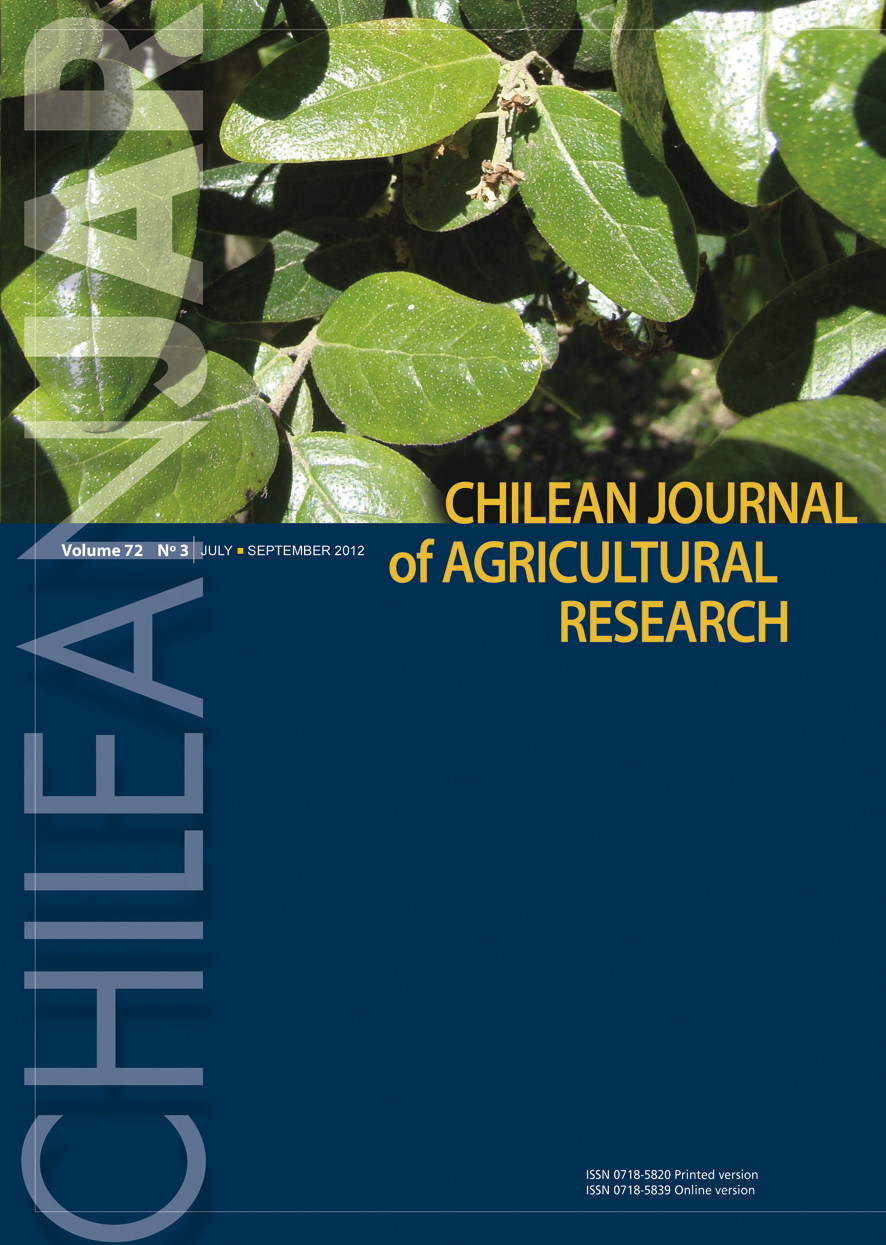
|
Chilean Journal of Agricultural Research
Instituto de Investigaciones Agropecuarias, INIA
ISSN: 0718-5820
EISSN: 0718-5820
Vol. 70, No. 4, 2010, pp. 626-632
|
 Bioline Code: cj10070
Bioline Code: cj10070
Full paper language: English
Document type: Research Article
Document available free of charge
|
|
|
Chilean Journal of Agricultural Research, Vol. 70, No. 4, 2010, pp. 626-632
| en |
Mathematical Modeling in the Estimation of Pepper (Capsicum annuum L.) Fruit Volume
Bozokalfa, M. Kadri & Kilic, Murat
Abstract
Peppers (Capsicum annuum L.) are an important horticultural crop and are used fresh and processed. Fruit size estimation is used to describe the fruit’s growth curve, monitor individual plant growth, predict yield, and conduct physiological studies. Water displacement techniques are used to determine fruit volume, but these are time-consuming and impractical under field conditions. The aim of this study was to devise a mathematical model to analytically determine the non-destructive pepper fruit volume. Fruit volume was described as a dependent variable, while length, weight, and diameter were independent variables in the model which was formulated as Yi = 19.226859 + 0.139562 Xi –0.256142 Zi + 1.429122 Ti, where Yi = fruit volume (cm3), and Xi, Zi, and Ti are fruit diameter (mm), length (mm), and weight (g) , respectively. This equation can be easily used to predict the accuracy of pepper fruit volume. A significant relationship (P ≤ 0.01) was found between dependent and independent variables. The correlation coefficient describing the relationship between the actual fruit volumes and the model solution was 0.9516. Consequently, it was determined that pepper fruit volume can be described as depending on fruit length, weight, and diameter.
Keywords
Capsicum annuum, fruit growth, modeling applications, pepper fruit, predicting, water displacement.
|
| |
| es |
Modelos Matemáticos en la Estimación del Volumen de Fruto de pimiento (Capsicum annuum L.).
Bozokalfa, M. Kadri & Kilic, Murat
Resumen
Los pimientos (Capsicum annuum L.) son cultivos hortícolas importantes y su fruto es usado fresco y procesado. La estimación del tamaño de fruto se usa para describir la curva de crecimiento del fruto, monitoreo individual de crecimiento vegetal, predicción de rendimiento, y estudios fisiológicos. Las técnicas de desplazamiento de agua son usadas para determinar volumen de fruto pero consumen tiempo y no son prácticas en terreno. El objetivo de esta investigación fue idear un modelo matemático para determinar analítica y no destructivamente el volumen del fruto de pimiento. En el modelo se describió volumen del fruto como variable dependiente, y longitud, peso y diámetro de fruto como variables independientes. El modelo se formuló como Yi = 19.226859 + 0.139562 Xi –0.256142 Zi + 1.429122 Ti, donde Yi es volumen de fruto (cm3), y Xi, Zi y Ti son diámetro (mm), longitud (mm) y peso (g) del fruto respectivamente, y esta ecuación puede ser fácilmente usada para predecir confiablemente el volumen del fruto. Se encontró una correlación significativa (P ≤ 0,01) entre las variables dependientes e independientes. El coeficiente de correlación que describe la relación entre volumen real del fruto y aquel del modelo fue 0,9516. Consecuentemente, se determinó que el volumen del fruto del pimiento puede depender de su longitud, peso y diámetro.
Palabras-clave
Capsicum annuum, crecimiento de fruta, aplicaciones de modelación, pimiento, predicción, desplazamiento de agua.
|
| |
© Copyright 2010 Chilean Journal of Agricultural Research.
Alternative site location: http://www.inia.cl
|
|
